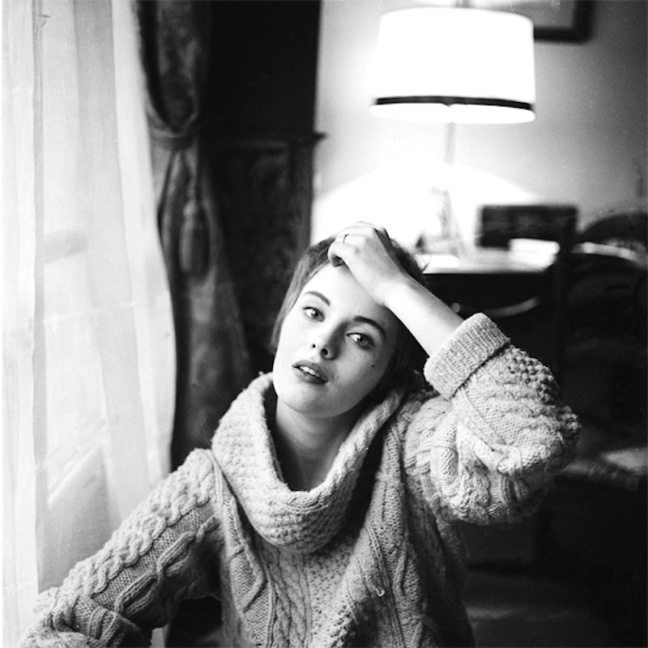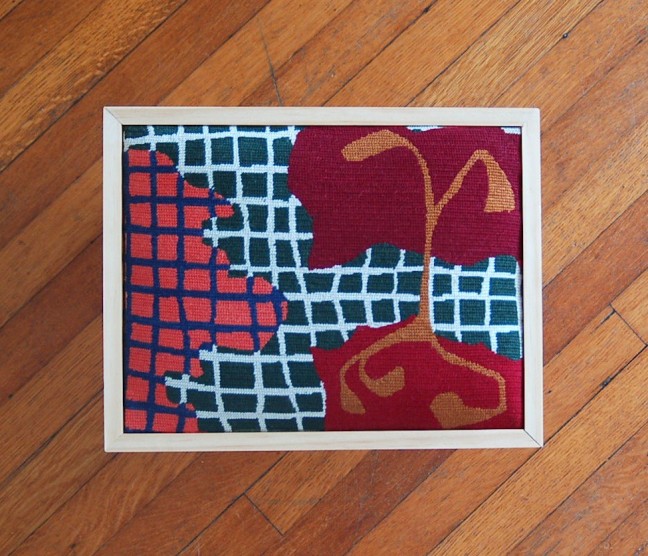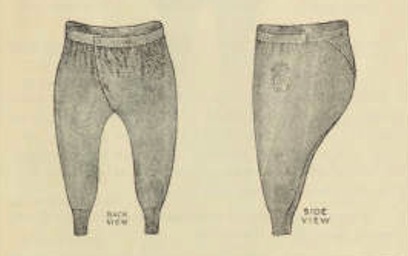For the second project in our “Making It, Ourselves” series—our series of DIY projects inspired by history—we look back to Dr. Gustav Jaeger and his animal-fiber philosophy. He and his adherents claimed that all dress should be not only practical but healthful, which for him meant clothing made purely of wool, camel, mohair or other animal material. (For the full post, see our Brief History of Long Underwear from back in February.) Inspired by the Jaeger story and its reverberations in the Rational Dress Movement of the same era, I set off to create my own animal-based garment to insulate, ventilate, regulate, circulate, and uhh de-fluxionate(?) my body. I found just the garment in Dianna Walla’s Aspen Socks. Continue reading MAKING IT, OURSELVES: Dianna Walla’s Aspen Socks/Warmers
HISTORY PROJECT: The Legend of the Aran Sweater

I know, I know. There is already SO MUCH out there about Aran sweaters. There is, for example, a fantastic slideshow and timeline of the rise of this famous knitting style. There are articles about its morbid history as an identifier of drowned sailors; articles debunking that history as pure fiction; articles explicating the stitch motifs, like hieroglyphs, according to their folk meanings; articles upholding the sweater as symbolic of both national identity and transnational migration. Regardless of the angle, it is clear in all of these instances that the Aran sweater (also called a fisherman sweater*) is much more than just clothing: it is a legend.
As a scholar, I want to understand this legend. As a knitter, I want to be part of it. This week’s post is my effort to do both. Wading through the myriad definitions, explanations, and myths, it became clear that in order to understand the Aran’s mystique, we need to consider its historical and literary roots. Continue reading HISTORY PROJECT: The Legend of the Aran Sweater
POP FIBER: Brioche Knitwear & Carol


Much has been said, written, drooled… about the wardrobe in the film Carol (2015). The film stars Cate Blanchett as Carol Aird, a middle-aged, mid-divorce mother, and Rooney Mara as Therese Belivet, department store shopgirl and Carol’s young lover. Costume designer Sandy Powell knocked it out of the park with Carol’s vintage garb, from the showstopping fur coat to the coral scarves and hats to match her manicure. Therese’s wardrobe is less glamorous but just as drool-worthy—the wide-leg trousers with ankle booties, the navy duffle coat with striped detail, the whimsical pom-pommed beret. From start to finish, the women are divine.


But, of all of the fantastic garments in this fantastic film, the one that I find myself thinking about again and again is not one worn by either Blanchett or Mara—it’s the sweater worn by Therese’s male suitor Richard (Jake Lacy) when the two argue in her apartment. In this scene, while he struggles once again to comprehend why Therese would prefer to spend time with her “friend” Carol than to sail with him to Europe, he looks impossibly snuggly and dapper in a chartreuse-and-black ribbed knit pullover with a shawl collar. Continue reading POP FIBER: Brioche Knitwear & Carol
MAKING IT, OURSELVES: The Alice Footstool
 Behold! The first Fiber Archive DIY project is officially finished! Inspired by Alice B. Toklas and Pablo Picasso’s upholstery collaboration in the late 1920s, our new embroidered footstool is a testament to both Toklas’s steadfastness and Picasso’s whimsicality.
Behold! The first Fiber Archive DIY project is officially finished! Inspired by Alice B. Toklas and Pablo Picasso’s upholstery collaboration in the late 1920s, our new embroidered footstool is a testament to both Toklas’s steadfastness and Picasso’s whimsicality.
As discussed in the Toklas X Picasso HISTORY PROJECT post, our gal Toklas attended to her domestic tasks, many of which involved fiber craft, with the same care and vigor that Picasso or Gertrude Stein, her partner, devoted to their art. (Toklas was even known to stitch Stein’s famous line “Rose is a rose is a rose” onto Stein’s handkerchiefs). This particular collaboration between the artists began with Toklas’s desire to transfer an avant-garde masterpiece—Picasso’s guitar painting—into a petit-point footstool. Clearly viewing her and Stein’s everyday living space as an extension of their artistic life, Toklas transformed a lowly footstool into high art. The stool was soon followed by the even more ambitious Louis XV upholstered chairs, one covered in the playful floral/hand design and the other in bold lines and color blocking. Continue reading MAKING IT, OURSELVES: The Alice Footstool
WIP CHECK




Happy Friday! Our fingers have been busy over here, and not just with blogging. Half of Fiber Archive’s mission is to showcase inspirational projects from the annals of textile history*, but the OTHER half is to put our own hands to work—to re-make those historical objects into inspired new pieces.
In that spirit, we will follow up many of our History Project entries with DIY projects of our own making—some, from original designs; others, based on existing patterns that we think capture the essence of the historical object. So, with a couple of History Project posts under our belt now, it’s a good time for a check-in of sorts, a little sneak peek at two of the history-inspired projects currently underway. Continue reading WIP CHECK
MAKING IT, NEW: Alice Anderson and Chi Nguyen

This week marks the culmination of two textile-related projects that seek to make “women’s work” visible, albeit in two different contexts: art and politics. In New York, this is the final week to catch Saatchi gallery’s Champagne Life, notable not only for being the gallery’s first all-female art show, but also for its bringing together of such a variety of provocative artists. The most fiber-forward of the bunch is Alice Anderson, whose pieces for the show include a 3-meter tall hand-wound bobbin. Meanwhile, in Washington, D.C., the 5.4 Million and Counting project, spearheaded by artist Chi Nguyen, presented a collaborative embroidery work at a Supreme Court Rally in support of women’s reproductive rights on Wednesday, March 2. Anderson’s and Nguyen’s works are different—one hyperbolizes a sewing notion to make an artistic statement, while the other gathers sewn stitches to express a political position—but they both link traditionally feminized labor with current questions about the agency of the female body.
Continue reading MAKING IT, NEW: Alice Anderson and Chi Nguyen
HISTORY PROJECT: A Brief History of Long Underwear

I admit it: I’ve been wanting an excuse to make Dianna Walla’s Aspen leg warmers since I first saw them on Instagram. I initially schemed about doing a post on the history of long underwear just so I could feel justified in adding the Aspens to my to-knit list. As soon as I started digging, though, the leg warmers became a bonus on top of a fascinating history lesson about a fertile moment in fashion history. Emerging in the early 1880s, the Sanitary Woolen System and the Rational Dress Movement both called for practicality and health in everyday dress. Variously rooted in the vagaries of pseudoscience on the one hand and radical feminism on the other, their joint legacy includes such a seemingly mundane garment as long underwear.
 First, the Woolen System. Those of us who are spinners, weavers, knitters, and crocheters are well versed in the wonders of wool. But it was news to me that, more than a century ago, there arose an influential school of thought that wool is not only a practical material but also a supremely healthful one. In 1880, Dr. Gustav Jaeger (sometimes Jäger) published Standardized Apparel For Health Protection on the health benefits of wearing wool, and he followed it up with Health-Culture (<– how great/vague is that title?!) in 1887.
First, the Woolen System. Those of us who are spinners, weavers, knitters, and crocheters are well versed in the wonders of wool. But it was news to me that, more than a century ago, there arose an influential school of thought that wool is not only a practical material but also a supremely healthful one. In 1880, Dr. Gustav Jaeger (sometimes Jäger) published Standardized Apparel For Health Protection on the health benefits of wearing wool, and he followed it up with Health-Culture (<– how great/vague is that title?!) in 1887.
Continue reading HISTORY PROJECT: A Brief History of Long Underwear
HISTORY PROJECT: Toklas X Picasso Petit Point

Alice B. Toklas (1877–1967)—wife of literary avant-gardist Gertrude Stein (1874–1946) and subject of Stein’s tongue-in-cheek Autobiography of Alice B. Toklas—is not much celebrated in her own right. To literary scholars, she is the wifely support system that made Stein’s genius possible; to the broader public, she is the author of a cookbook once famous for its “hashish fudge” recipe. We think Toklas should be touted far and wide as a needlework goddess with a taste for whimsy (beyond just the fudge).
You’ll definitely see Toklas’s name pop up again here at the Fiber Archive—she was a prolific crafter —but today we’ll focus on the real showstopper of her oeuvre: her embroidery collaborations with cubist artist Pablo Picasso (1881–1973).
Continue reading HISTORY PROJECT: Toklas X Picasso Petit Point


